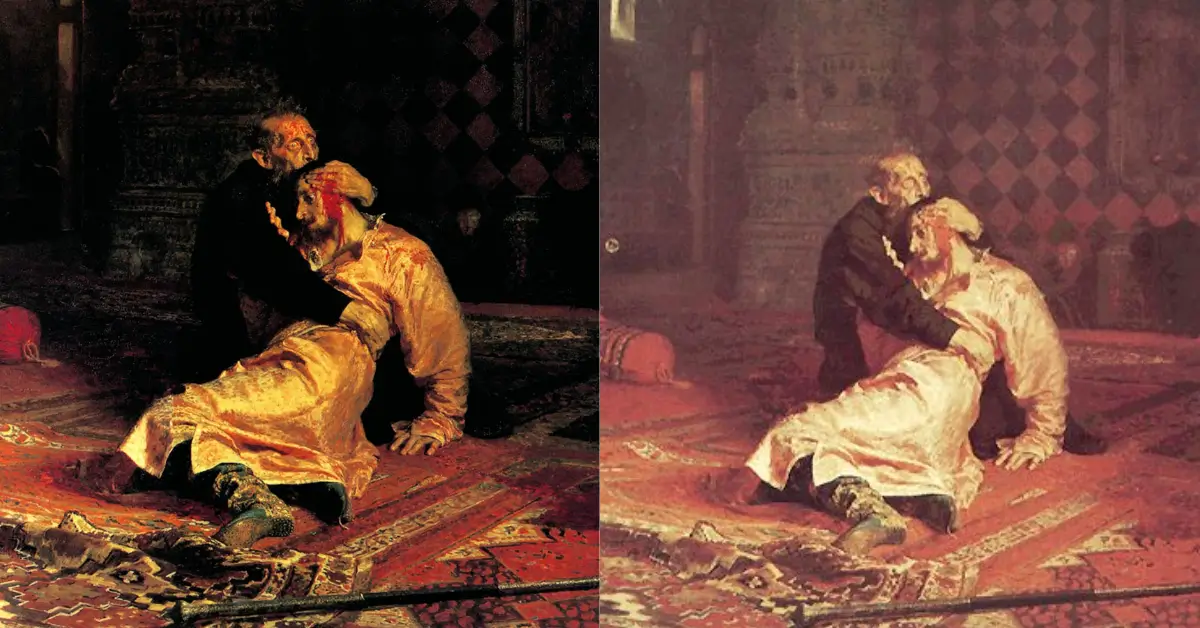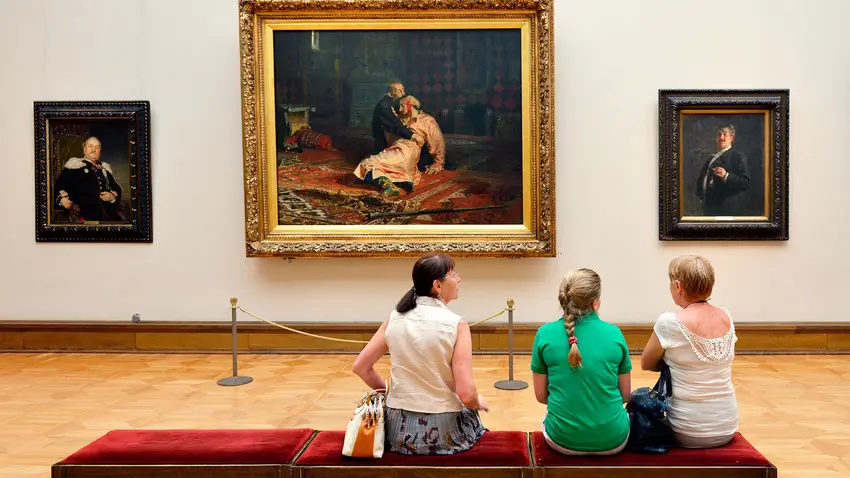
Ivan the Terrible and His Son: Understanding the Tragedy in Russian History

The story of Ivan the Terrible and his son is one of the most poignant and dramatic episodes in Russian history, immortalized in the iconic painting by Ilya Repin. This artwork not only captures a tragic moment between a father and son but also serves as a powerful symbol of the complexities of power, remorse, and the consequences of unchecked rage.
In this article, we will delve deep into the historical context, the psychological intricacies of Ivan IV Vasilyevich (Ivan the Terrible), and the enduring legacy of this masterpiece in both Russian art and cultural heritage.
Overview of Ivan the Terrible’s Reign
Ivan IV, known to history as Ivan the Terrible, was the first Tsar of Russia, reigning from 1547 until his death in 1584. Born into the Rurik dynasty, Ivan inherited the throne at the tender age of three, leading to a tumultuous childhood filled with court intrigues and power struggles.
His reign is often remembered for the establishment of a centralized autocracy, which transformed Russia from a medieval state into a more modern empire. However, his rule was also marked by extreme brutality, including the creation of the Oprichnina, a policy that allowed him to wield absolute power, often resulting in the persecution and execution of those he perceived as threats.
Under Ivan’s rule, Russia expanded its territories, conquering the Khanates of Kazan, Astrakhan, and Siberia, thus laying the foundations for what would later become the Russian Empire. However, his reign was also plagued by his increasingly erratic behavior, which historians attribute to mental instability and paranoia.
Despite his contributions to Russian state-building, Ivan the Terrible’s legacy is overshadowed by the violence and terror he unleashed upon his people, culminating in the tragic event that would forever define his legacy.
The Tragic Incident Between Ivan the Terrible and His Son
The most infamous and heart-wrenching event of Ivan the Terrible’s reign occurred in 1581, when, in a fit of uncontrolled rage, he struck his eldest son, Ivan Ivanovich, with a staff. The blow was fatal, leading to the young Ivan’s untimely death. This moment is a profound example of the destructive power of anger and has been immortalized in the painting “Ivan the Terrible and His Son” by Ilya Repin.
The incident not only marked a personal tragedy for Ivan the Terrible but also had significant implications for the future of Russia, as the Tsar was left without a capable heir, leading to a period of turmoil known as the Time of Troubles.
This act of patricide has been the subject of much debate among historians. Some argue that Ivan the Terrible was driven to madness by the pressures of his rule and the loss of his beloved wife, Anastasia Romanovna, whose death he believed to be the result of poisoning.
Others suggest that his violent outburst was a manifestation of his lifelong struggle with mental health, exacerbated by the isolation and suspicion that characterized his later years. Whatever the cause, this tragic event has come to symbolize the darker aspects of Ivan the Terrible’s reign and serves as a cautionary tale about the dangers of absolute power.
Also Read: Voices of Conservation Blog
Ilya Repin: The Artist Behind the Masterpiece
Ilya Repin, one of Russia’s most celebrated artists, was born in 1844 in what is now Ukraine. He rose to prominence in the late 19th century as a master of realism, a style characterized by its attention to detail and its ability to convey deep emotional truths.
Repin’s works often explored the complexities of the human condition, and his painting “Ivan the Terrible and His Son” is no exception. Completed in 1885, this masterpiece is widely regarded as one of the most important works in the history of Russian art.
Repin was a member of the Peredvizhniki, or Wanderers, a group of Russian realist painters who sought to break away from the restrictive confines of academic art and instead depict scenes from everyday life, often with a focus on social and political themes.
His ability to capture the raw emotion of his subjects, combined with his meticulous attention to historical accuracy, made him one of the leading figures of his time. “Ivan the Terrible and His Son” remains one of his most enduring works, both for its artistic merit and for its powerful portrayal of a pivotal moment in Russian history.
Analysis of “Ivan the Terrible and His Son” Painting
“Ivan the Terrible and His Son” is a painting that speaks volumes about the complexities of the human soul. In this work, Repin masterfully captures the moment of realization and regret that follows Ivan the Terrible’s fatal blow to his son.
The Tsar’s eyes are wide with horror as he cradles the lifeless body of Ivan Ivanovich, his expression a mixture of disbelief, sorrow, and overwhelming guilt. The son, bloodied and broken, is a tragic figure, his face reflecting the pain and betrayal of a life cut short by the very person who should have protected him.

The painting’s composition is both intimate and dramatic, with the two central figures dominating the canvas. The stark contrast between the dark, shadowy background and the bright, almost ethereal light that illuminates the father and son draws the viewer’s attention to their faces, where the true emotional impact of the scene is revealed.
Repin’s use of color and light, along with his attention to detail in the depiction of the characters’ expressions, creates a powerful visual narrative that transcends time, making this painting a timeless commentary on the human condition.
The Historical Context of 16th-Century Russia
To fully appreciate the significance of the tragic incident between Ivan the Terrible and his son, it is essential to understand the historical context of 16th-century Russia. During this period, Russia was undergoing significant transformations, both politically and socially.
Ivan the Terrible’s reign was marked by efforts to centralize power and expand the Russian state, but it was also a time of great turmoil, with constant threats from internal and external enemies.
The Moscow Kremlin, the seat of power, became a symbol of this centralization, as Ivan sought to assert his authority over the vast and diverse territories of Russia. However, his rule was also characterized by brutal methods of control, including the use of the Oprichnina, a state policy that allowed him to eliminate perceived enemies with impunity.
This period also saw the growing influence of the Russian Orthodox Church, which played a crucial role in legitimizing Ivan’s rule while also serving as a moral counterbalance to his more extreme actions.
The Psychological Profile of Ivan the Terrible
Understanding the psychological profile of Ivan the Terrible is key to unraveling the motivations behind his infamous act of violence against his son. Historians have long debated the mental state of Ivan IV, with many suggesting that he suffered from a combination of mental illnesses, including paranoia, depression, and possibly even schizophrenia.
These conditions were likely exacerbated by the immense pressures of his rule, as well as the traumatic events of his early life, including the loss of his parents and the constant threats to his power.
Ivan’s mental instability manifested in increasingly erratic and violent behavior, particularly in the later years of his reign. His deep-seated paranoia led him to suspect those closest to him of treachery, resulting in numerous executions and acts of cruelty.
The death of his beloved wife, Anastasia, further contributed to his emotional decline, leading him to lash out in unpredictable and often brutal ways. The tragic death of his son, therefore, can be seen as the culmination of a lifetime of unresolved trauma and unchecked power.
The Legacy of Ivan the Terrible in Russian History
Despite the horrors of his reign, Ivan the Terrible left an indelible mark on Russian history. He was a complex figure, capable of great vision and innovation, but also prone to extreme cruelty and violence. His efforts to centralize the Russian state and expand its borders laid the groundwork for the Russian Empire, and his establishment of a centralized autocracy had a lasting impact on the development of the Russian state.
However, Ivan’s legacy is also one of tragedy and loss. The death of his son, Ivan Ivanovich, not only deprived Russia of a capable heir but also plunged the country into a period of instability and chaos known as the Time of Troubles.
This period of political upheaval and famine lasted for over a decade and ultimately led to the end of the Rurik dynasty. Ivan’s reign, therefore, serves as a powerful reminder of the dangers of absolute power and the human cost of unchecked ambition.
Controversies Surrounding the Painting
The painting “Ivan the Terrible and His Son” has been the subject of much controversy since its creation. Some critics argue that Ilya Repin took artistic liberties in his depiction of the event, exaggerating the emotional intensity of the scene for dramatic effect. Others have questioned the historical accuracy of the painting, suggesting that the incident may have been exaggerated or even fabricated by later historians seeking to vilify Ivan the Terrible.
Despite these controversies, the painting remains one of the most famous and influential works in Russian art. Its impact on both art and history cannot be overstated, as it continues to be a powerful symbol of the complexities of human emotion and the consequences of power. Whether viewed as a historical document or a work of art, “Ivan the Terrible and His Son” is a masterpiece that continues to resonate with audiences today.
The Artistic Techniques Used by Ilya Repin
Ilya Repin’s artistic techniques in “Ivan the Terrible and His Son” are a testament to his skill as a realist painter. His use of light and shadow, combined with his attention to detail in the raw emotions of the moment marks a turning point in the representation of psychological depth in visual art.
The painting is celebrated not only for its dramatic narrative but also for its innovative techniques that blend realism with deep emotional resonance. It stands as a striking example of how art can convey complex human experiences, transcending the limitations of language and time.
The significance of this painting extends beyond the Russian context, influencing artists across Europe and contributing to broader movements in art history that sought to explore the human condition.
Repin’s work is often compared to other masterpieces that deal with themes of tragedy and emotional conflict, including those by Rembrandt and Caravaggio. “Ivan the Terrible and His Son” serves as a bridge between historical narrative and personal emotion, inviting viewers to grapple with the profound implications of Ivan’s actions and the weight of his legacy.
The Moscow Kremlin: A Witness to Ivan the Terrible’s Rule
The Moscow Kremlin, the historic heart of Russia, played a central role during the reign of Ivan the Terrible. This fortified complex served as the residence of the Tsar and the seat of political power, symbolizing the centralization of authority that Ivan sought to achieve. Its walls witnessed the tumultuous events of Ivan’s reign, including the establishment of the Oprichnina, which allowed him to eliminate his perceived enemies and consolidate his power.
Today, the Kremlin stands as a UNESCO World Heritage site and a symbol of Russian heritage. It reflects the architectural grandeur of the era and serves as a reminder of the complex history of the Russian monarchy.
As visitors explore its cathedrals, palaces, and fortifications, they are transported back to a time when power was often accompanied by violence and intrigue. The Kremlin is not just a backdrop for Ivan’s reign; it is a testament to the enduring legacy of one of Russia’s most controversial figures.
The Influence of Ivan the Terrible’s Legacy on Russian Tsars
The legacy of Ivan the Terrible has profoundly influenced subsequent generations of Russian Tsars. His reign established a model of autocratic rule that many later monarchs sought to emulate, often drawing on his methods of centralization and control. The impact of his actions, particularly his violent tendencies, can be seen in the practices of later rulers who grappled with the challenges of governance in a vast and diverse empire.
While some Tsars sought to distance themselves from Ivan’s legacy, particularly in light of the Time of Troubles that followed his death, others embraced aspects of his rule.
For instance, Peter the Great implemented reforms aimed at modernizing Russia while simultaneously asserting his authority in a manner reminiscent of Ivan’s centralization efforts. The complexities of Ivan’s reign serve as both a cautionary tale and an enduring influence on the evolution of the Russian monarchy.
Quick Facts
- Ivan IV Vasilyevich: Known as Ivan the Terrible, he was the first Tsar of Russia, reigning from 1547 to 1584.
- Ivan Ivanovich: The eldest son of Ivan the Terrible, tragically killed by his father in 1581.
- Ilya Repin: The artist who painted “Ivan the Terrible and His Son,” completed in 1885.
- 1581: The year of the tragic incident between Ivan and his son.
- The Tretyakov Gallery: The museum in Moscow that houses the famous painting.
- The Rurik dynasty: The ruling family of Russia to which Ivan the Terrible belonged.
- 1885: The year “Ivan the Terrible and His Son” was completed.
Final Thoughts
The story of Ivan the Terrible and his son is a compelling narrative that intertwines personal tragedy with the broader strokes of Russian history.
Through Ilya Repin’s powerful painting, we gain insight into the complexities of human emotion, the impact of power on personal relationships, and the lasting legacy of a Tsar whose reign was defined by both brilliance and brutality. This tragic tale continues to resonate today, reminding us of the delicate balance between authority and humanity.
As we reflect on this poignant moment in history, we are invited to explore the themes of love, loss, and regret, which remain relevant in our contemporary world. The legacy of Ivan the Terrible is one of caution and reflection, encouraging us to confront the darker aspects of power and ambition while celebrating the enduring spirit of artistic expression that captures the essence of our shared human experience.
FAQs
Who was Ivan the Terrible?
Ivan IV Vasilyevich, known as Ivan the Terrible, was the first Tsar of Russia, ruling from 1547 to 1584. He is known for his autocratic rule, territorial expansion, and notorious acts of violence.
What happened between Ivan the Terrible and his son?
In 1581, during a fit of rage, Ivan the Terrible struck his eldest son, Ivan Ivanovich, resulting in the son’s death. This tragic incident has become a defining moment in Ivan’s legacy.
Who painted “Ivan the Terrible and His Son”?
The painting was created by the Russian artist Ilya Repin and completed in 1885. It captures the emotional turmoil of the moment following the tragic incident between Ivan and his son.
What is the significance of the painting?
“Ivan the Terrible and His Son” is significant for its emotional depth and portrayal of a pivotal moment in Russian history. It serves as a powerful commentary on the complexities of power and the consequences of violence.
How did Ivan the Terrible’s reign impact Russian history?
Ivan the Terrible’s reign marked the transition of Russia into a centralized autocracy, laying the groundwork for the future Russian Empire. His methods of rule and the resulting turmoil had lasting effects on the monarchy and governance in Russia.









